
When your prescription switches from the brand-name drug you’ve been taking to a cheaper version, it’s easy to panic. Is it the same? Will it work? Will you feel different? The truth is, if you’re getting an authorized generic, you’re getting the exact same medication-same active ingredients, same factory, same pills. The only difference? No brand name on the bottle.
Authorized generics aren’t just another generic. They’re the brand-name drug made by the same company, sold under a different label. Think of it like buying a Coca-Cola bottle with no logo on it-it’s still Coca-Cola. And for patients, that means you can save anywhere from $15 to $30 per prescription without risking effectiveness or safety.
What Exactly Is an Authorized Generic?
An authorized generic is a version of a brand-name drug that’s made by the original manufacturer and sold without the brand name. It’s not a copy. It’s not a knockoff. It’s the same drug, same pills, same packaging-except the box says nothing about the brand. The FDA requires these to be listed in the Orange Book, and they’re approved under the same New Drug Application (NDA) as the brand name. That means no extra testing, no guessing about equivalence. It’s the real thing.
Contrast that with traditional generics. Those are made by other companies and must prove they’re bioequivalent to the brand. They can have different colors, shapes, or inactive ingredients. Sometimes, those differences matter-especially if you’re sensitive to dyes or fillers. Authorized generics avoid that entirely. They’re made in the same facility, on the same line, with the same exact recipe.
Here’s the kicker: about 20-25% of brand-name drugs with generic competition have an authorized generic version. And when they do, prices drop faster and deeper than with traditional generics alone. Studies show retail prices fall 4-8% and wholesale prices drop 7-14% when an authorized generic enters the market.
Why Do Authorized Generics Exist?
You might wonder why the brand company would sell its own drug cheaper. The answer is business strategy, not charity. After the 1984 Hatch-Waxman Act, brand manufacturers realized they could launch an authorized generic during the 180-day exclusivity window that’s supposed to protect the first generic company. Instead of letting one competitor capture the market, they enter it themselves-with their own product-at a lower price.
This move cuts the profit margins for the first generic company, but it also drives down prices for consumers. Between 2001 and 2008, 92% of authorized generics were launched by the brand company itself. Today, 42% of the top 200 brand-name drugs that lose patent protection introduce an authorized generic within six months of generic entry.
It’s not always about competition. Sometimes, it’s about control. By launching their own authorized generic, brand companies ensure quality stays high, avoid supply issues, and keep some market share-even if they’re no longer charging premium prices.
How to Know If You’re Getting an Authorized Generic
Not every generic is an authorized generic. Many pharmacies automatically substitute traditional generics unless you specifically ask for the brand. So how do you know if what you’re getting is the real deal?
- Check the FDA’s Orange Book-search for your drug and look for the "Authorized Generic" column.
- Ask your pharmacist: "Is this an authorized generic?" They can check the National Drug Code (NDC) and confirm.
- Look at the pill. If it looks identical to the brand-name version, it’s likely an authorized generic. Traditional generics often change shape or color.
- Check the label. Authorized generics won’t have the brand name, but they will list the same manufacturer as the brand.
For example, if you take Lipitor (atorvastatin), the authorized generic is made by Pfizer and sold under the name "atorvastatin calcium"-but it’s the exact same tablet. The bottle just says "Pfizer" instead of "Lipitor."
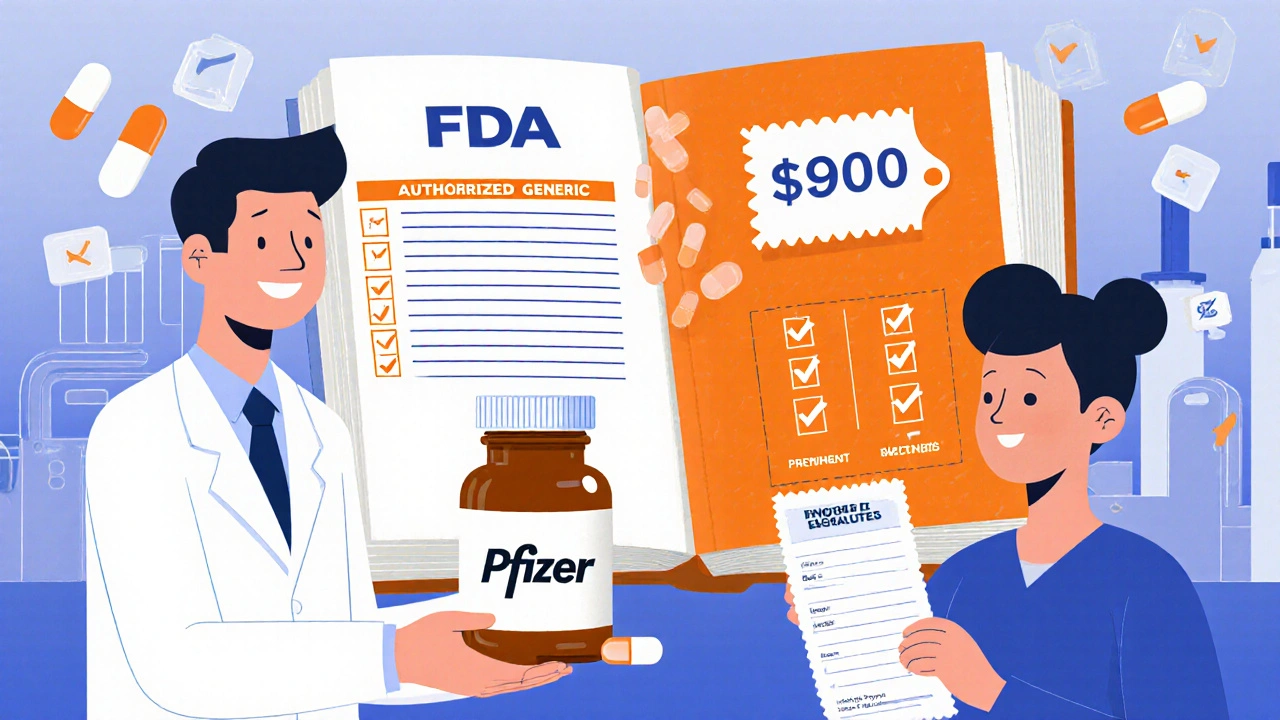
Will Your Insurance Cover It?
Most insurance plans-Medicare Part D, Medicaid, and private insurers-automatically switch you to the lowest-cost option. If an authorized generic exists, you’ll likely be switched without asking. In fact, 80-90% of prescriptions for drugs with authorized generics are filled with the AG version.
But here’s what you need to know: your copay might drop dramatically. For many drugs, the authorized generic costs $10-$15 per month instead of $40-$60 for the brand. That’s a 60-75% savings. Some plans even make the brand-name version require prior authorization if an authorized generic is available.
If your plan doesn’t automatically switch you, call your insurer. Ask: "Is there an authorized generic for [drug name]? Can I get it covered at the generic tier?" Most will say yes.
What to Expect When You Switch
Most people notice zero difference. That’s because there is none. The active ingredient is identical. The dosage is identical. The way your body absorbs it is identical.
But some patients report confusion. Why? Because the pill looks different. Sometimes, even authorized generics change packaging-especially if the brand and AG are made at different facilities under the same company. For example, one batch might be round and white, another oval and blue. That doesn’t mean it’s a different drug. It just means the manufacturer switched molds or packaging lines.
Pharmacists report that 65% of patient questions about authorized generics are about appearance. The fix? Simple education. A quick note from your pharmacist: "This is the same medicine, just without the brand name. It works the same way."
Studies show medication adherence doesn’t drop after switching to an authorized generic. In fact, 85% of patients continue taking it as prescribed-same as with the brand. That’s higher than many traditional generics, where appearance changes sometimes cause people to stop taking their meds.
When You Should Be Cautious
While authorized generics are safe for nearly everyone, there are two situations where you should double-check:
- Severe allergies to inactive ingredients: Even though authorized generics use the same inactive ingredients as the brand, if you’ve had a reaction to a specific dye or filler in the past, ask your pharmacist to confirm the exact formulation.
- Complex medication regimens: If you’re on multiple drugs with narrow therapeutic windows-like blood thinners, thyroid meds, or seizure drugs-talk to your doctor before switching. Even small differences in absorption can matter.
For most people, though, these aren’t concerns. The FDA and FTC both confirm that authorized generics are therapeutically equivalent to their brand-name counterparts. No exceptions.
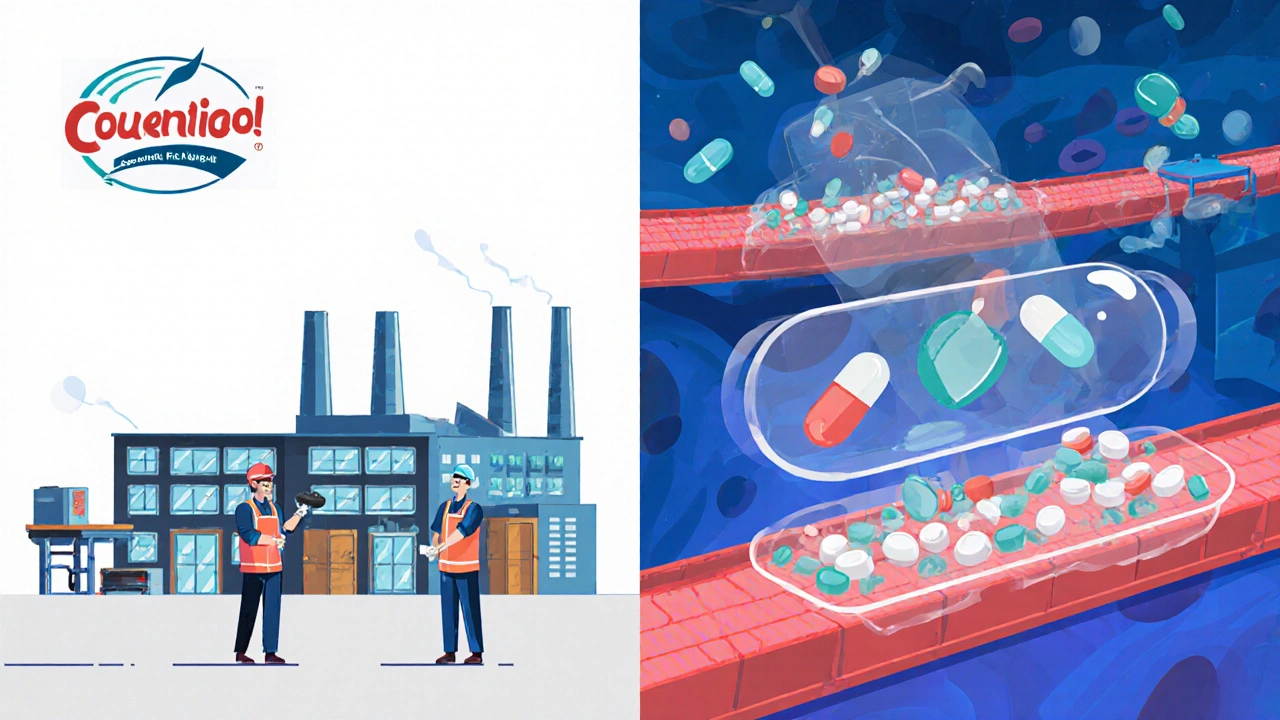
How to Make the Switch Smooth
Here’s a simple 5-step plan to switch from brand to authorized generic without stress:
- Check: Visit the FDA’s Orange Book and search your drug. Look for "Authorized Generic" listed under your brand name.
- Ask: Call your pharmacy and say: "Is there an authorized generic for [drug name]? Can I get it instead of the brand?"
- Confirm: When you pick up your prescription, check the bottle. Does it say the same manufacturer as the brand? Is the pill shape and color the same? If yes, you’ve got the right one.
- Notify: If you’re on a chronic condition, tell your doctor you switched. It’s not required, but it helps them track your care.
- Save: Keep the receipt. You’ll likely save $15-$30 per fill. Over a year, that’s hundreds.
Pro tip: Set a calendar reminder for when your next refill is due. That way, you won’t forget to check if the authorized generic is still available.
What’s Changing in 2025?
The FDA updated its reporting rules in 2020, making it easier to track authorized generics. By 2025, most pharmacy systems will automatically flag when an authorized generic is available-so your pharmacist will know before you even ask.
Also, more complex drugs are getting authorized generics. Biosimilars, injectables, and specialty medications are now entering this space. Morgan Stanley predicts 35% of biologic drugs losing patent protection by 2028 will have authorized versions.
That means more savings ahead-for conditions like rheumatoid arthritis, multiple sclerosis, and cancer. If you’re on a high-cost drug, ask your doctor: "Is there an authorized generic for this?"
Final Thought: It’s the Same Drug. Just Cheaper.
Switching from brand to authorized generic isn’t a compromise. It’s a smart move. You’re not trading quality for cost-you’re getting the exact same medicine at a fraction of the price. No studies show any difference in effectiveness. No patient reports feeling worse after switching. The only thing that changes? Your wallet.
Next time your prescription comes up for refill, don’t assume the generic is just another copy. Ask if it’s an authorized generic. You might be surprised how easy-and affordable-your next refill can be.

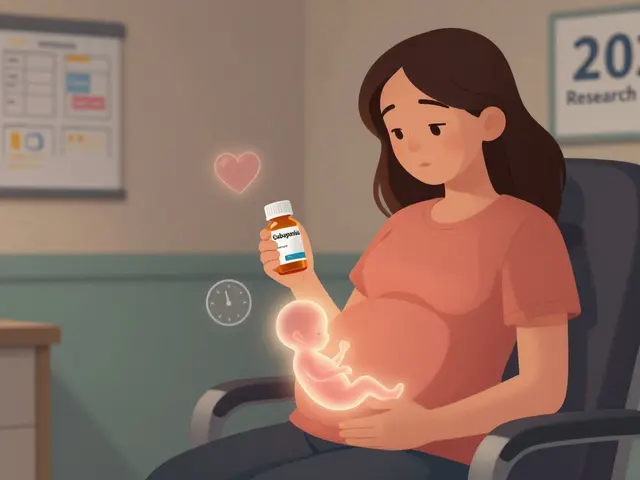
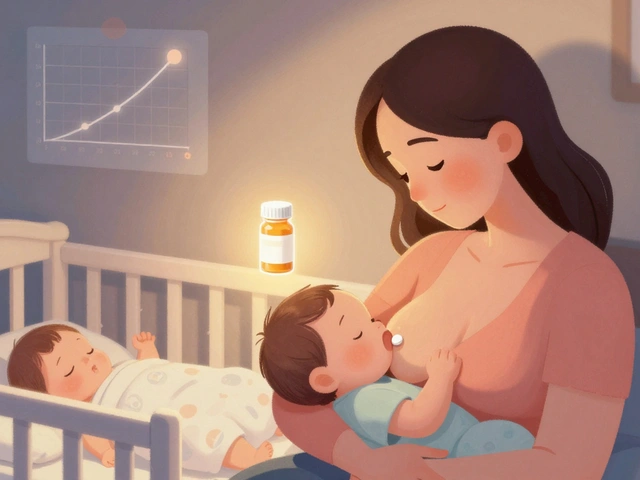
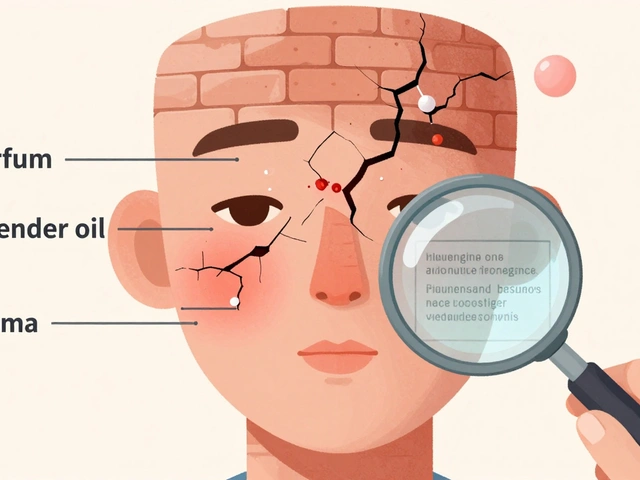
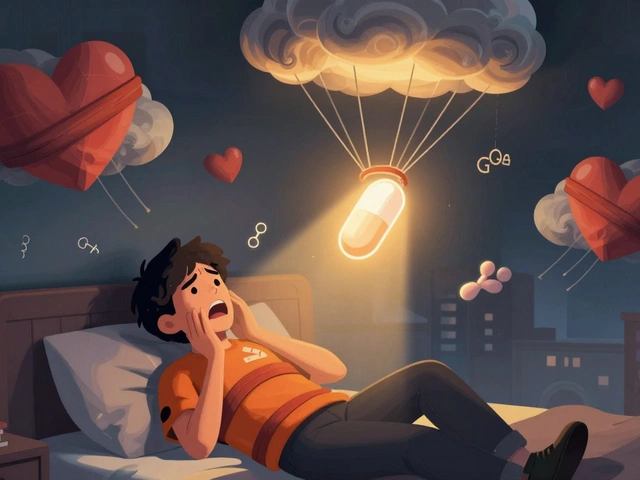
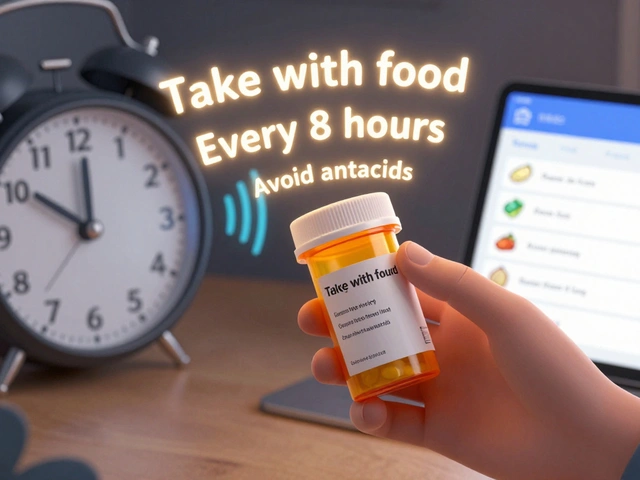
10 Comments
Authorized generics? Yeah, right. Let me guess-same factory, same pills, same everything… except the label. But here’s the thing: if the FDA allows it, why do so many patients report ‘different effects’? Coincidence? Or is the ‘bioequivalence’ standard just a legal loophole? I’ve seen people crash on switchovers-literally. And no, it’s not placebo. It’s chemistry. The excipients? They’re not inert. They’re pharmacologically active in subtle ways. And the FDA doesn’t test for that. Not really.
so like… the big pharma companies are just like… ‘haha we made the same pill but we’re gonna sell it cheaper so we still make money but you think you’re saving’?? like… why do they even bother making the brand then?? like… is this all just a scam?? i feel like i’m being gaslit by my own medicine bottle?? 🤔💊
Let’s be clear: this isn’t about ‘saving money.’ It’s about systemic manipulation. The FDA’s Orange Book is a façade. The ‘authorized generic’ is a Trojan horse-designed to erode brand loyalty while preserving corporate profits. And don’t get me started on how pharmacies are incentivized to push these. Your insurance company? They’re complicit. This isn’t healthcare. It’s a market-driven performance art where your body is the stage.
My cousin in Delhi switched from Crestor to the authorized generic and didn’t notice a thing. Same pill, same results. People overthink this. The science is solid. If it’s made by the same company, same line, same batch code-it’s the same. Stop treating medicine like it’s a cult product. It’s chemistry. Not branding.
OH MY GOD. I just realized-this is why my blood pressure went nuts last month. I got the ‘generic’ and it was a different color. I thought it was the same. But what if it wasn’t? What if Pfizer didn’t make it? What if it was some sketchy lab in China repackaging pills with different fillers? I’m not even gonna take my meds until I get the bottle with the Pfizer logo back. This is dangerous. Someone needs to sue someone. Like, NOW.
There’s a quiet wisdom in this. We live in a world obsessed with labels-brand names, social status, identity. But here, the truth is simple: the pill doesn’t care what you call it. It doesn’t know if it’s Lipitor or atorvastatin calcium. It just does its job. Maybe the real lesson isn’t about savings. Maybe it’s about letting go of the illusion that name equals worth. The medicine doesn’t change. Only our fear does.
While I appreciate the comprehensive nature of this article, I must respectfully assert that the underlying assumption-that authorized generics are universally equivalent to their branded counterparts-is empirically unsupported by longitudinal, double-blind, placebo-controlled studies involving pharmacokinetic variability across diverse ethnic populations. Furthermore, the FDA’s Orange Book does not account for batch-to-batch consistency in inactive ingredient particle size distribution, which has been shown to influence dissolution profiles in patients with gastroparesis or malabsorption syndromes. 📊💊 #EvidenceBasedMedicine #Pharmacovigilance
You’re not alone. I switched my thyroid med to the authorized generic last year and was terrified. But I called my pharmacist-she pulled up the NDC, confirmed it was made by the same plant, and even showed me the batch number matched the brand. I cried. Not because I was sad-because I felt seen. You’re not crazy for worrying. But you’re not wrong for saving money either. You’re smart. And you deserve to feel safe. Keep asking questions. Keep checking labels. You’ve got this.
So let me get this straight: the brand company launches its own generic to crush the first generic company’s profits… and we’re supposed to cheer? This isn’t consumer-friendly. This is corporate warfare disguised as savings. And now we’re supposed to trust the same companies that price-gouged us for years? The FDA doesn’t regulate greed. It just rubber-stamps it. This isn’t progress. It’s a bait-and-switch with a white coat.
Just checked my last prescription. Same pill. Same manufacturer. Saved $22. No side effects. No drama. Just… medicine. 🌿